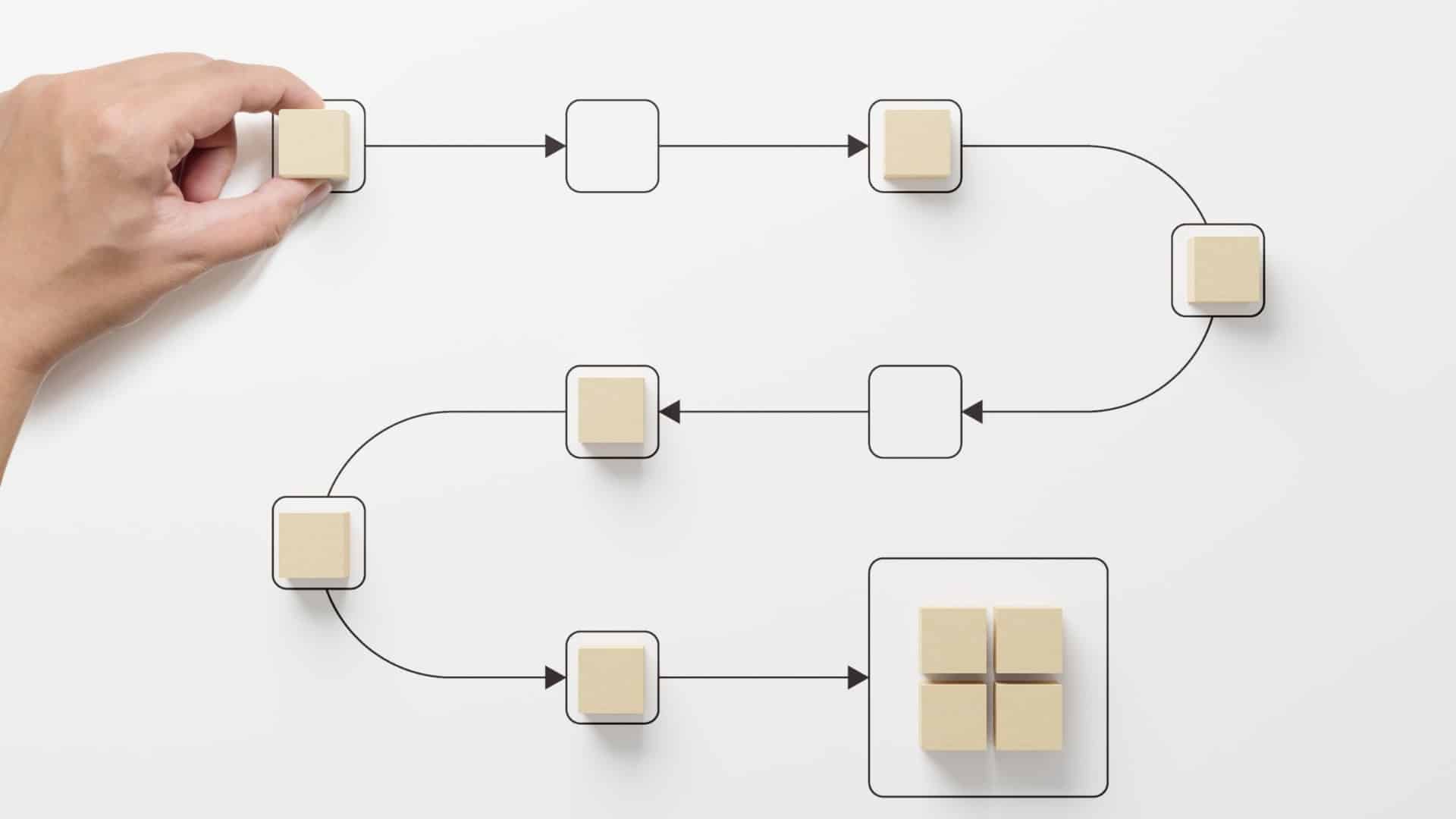What Is a Creative Brief

A creative brief is a concise document that outlines the strategy for a creative project. Typically spanning one to two pages, it serves as a roadmap, guiding creative teams toward achieving the project’s objectives. Marketing teams usually craft the brief to convey essential information to designers, writers, and other creatives, ensuring everyone is aligned on the project’s goals and expectations.
Key Components of an Effective Creative Brief
Project Background and ObjectivesProvide context about the project, including its purpose and what it aims to achieve. Clearly defined objectives help the creative team and project stakeholders understand the desired outcomes.
Project OverviewProvide a brief project overview that describes the project’s scope, purpose, and relevant background. This overview sets clear boundaries for the project and aligns it with broader organizational goals.
Target AudienceDescribe the intended audience for the project. Understanding the audience’s demographics, preferences, and pain points enables creatives to tailor content that resonates.
Key MessageSummarize the primary message or takeaway that the audience should retain after engaging with the content. Highlight the key takeaways for the creative team to ensure effective communication and clarity.
Tone and VoiceSpecify the desired tone and voice for the project, ensuring consistency with the brand’s identity and appropriateness for the target audience.
Deliverables and TimelineOutline the expected deliverables, such as specific content pieces or design assets, along with deadlines for each stage of the project.
Budget ConstraintsInclude any financial limitations to ensure the creative solutions proposed are feasible within the allocated resources.

The Importance of a Great Creative Brief
A great creative brief is essential for the success of any creative project. It serves as a roadmap that guides the project from start to finish, ensuring that all stakeholders are on the same page and working towards the same goal. A well-crafted creative brief can help prevent misunderstandings, miscommunication, and delays, ultimately leading to a more efficient and effective creative process.
A great creative brief is important for several reasons:
- Alignment: It ensures that all stakeholders, including the creative team, marketing team, and key stakeholders, are aligned and working towards the same goal.
- Clear Direction: It provides a clear direction for the creative team, ensuring that they understand the project’s objectives, target audience, and key messaging.
- Prevent Scope Creep: It helps to prevent scope creep and ensures that the project stays on track by clearly defining the project’s scope and deliverables.
- Focus on High-Impact Ideas: It enables the creative team to focus on high-impact ideas and strategies that meet the project’s objectives, ensuring effective creative work.
- Timely and Budget-Friendly Completion: It helps to ensure that the project is completed on time and within budget, managing expectations and resources effectively.
By ensuring that everyone is on the same page, a great creative brief sets the foundation for a successful creative project, leading to impactful and cohesive creative deliverables.
The Role of Digital Asset Management (DAM) in the Creative Process
Integrating a Digital Asset Management (DAM) system into the creative workflow enhances efficiency and collaboration. Here’s how:
Centralized Asset RepositoryA DAM system serves as a single source of truth for all digital assets, including existing assets, ensuring that creative teams have easy access to up-to-date materials. This centralization reduces time spent searching for files and minimizes the risk of using outdated assets.
Streamlined CollaborationWith features like version control and user permissions, a DAM facilitates seamless collaboration among team members. It allows for real-time updates and feedback, ensuring that everyone is working with the most current information.
Brand ConsistencyBy housing all brand assets and guidelines in one place, a DAM ensures that all creative outputs adhere to the brand’s standards. This consistency strengthens brand identity across all channels and touchpoints.
Efficient Review and Approval ProcessesA DAM system can automate workflows for reviewing and approving creative content, reducing bottlenecks and accelerating project timelines.
Best Practices for Creating a Creative Brief with DAM Integration
Leverage DAM for Asset ReferencingWhen drafting the creative brief, include direct links to relevant assets stored in the DAM. This practice provides the creative team with immediate access to necessary materials, fostering a more efficient workflow.
Utilize Templates and GuidelinesStore templates and brand guidelines within the DAM to ensure that all creative briefs and subsequent projects maintain a consistent format and adhere to brand standards, using a structured brief template.
Collaborate Within the DAM PlatformEncourage team members to use the DAM’s collaborative features to discuss and refine the creative brief. This centralized communication keeps all feedback and revisions in one place, enhancing clarity and reducing miscommunication.
How to Write a Creative Brief That Drives Results—and Why Digital Asset Management Matters
Why Creative Briefs Are the Key to Marketing Success
Every successful marketing campaign, brand refresh, or product launch starts with a clear and well-structured creative brief. A creative brief isn’t just a document—it’s a strategic roadmap that aligns teams, clarifies objectives, and ensures everyone is working toward the same vision, often starting with a well-crafted creative brief example.
But here’s the problem: many brands struggle with poorly defined, inconsistent, or outdated creative briefs. Without clear direction, projects can derail, leading to missed deadlines and misaligned execution, ultimately failing to meet the project’s goals:
Missed deadlines due to confusion and scope creep Inconsistent branding because teams use outdated materials Lost productivity as creatives waste time searching for the right assets Weak marketing results from disjointed messaging and misaligned execution
Solution: A structured creative brief combined with a digital asset management (DAM) platform ensures that creative projects run efficiently, on-brand, and on time, helping to manage expectations effectively.
Let’s break down how to create a winning creative brief—and why a DAM system like ASMBL is essential for keeping creative teams aligned.

What Is a Creative Brief?
A creative brief is a short, strategic document that outlines the key goals, messaging, and execution plan for a creative project. It ensures that designers, writers, videographers, and marketing teams all work from the same playbook.
Key Elements of a Strong Creative Brief
Project Objective – What’s the goal of this project? (brand awareness, lead generation, product launch) The length and detail of a creative brief can vary significantly based on the project’s complexity.
Target Audience – Who are we speaking to? (demographics, pain points, interests)
Key Message – What’s the one thing we want people to remember?
Brand Voice & Tone – How should this content feel? (bold, friendly, formal, fun)
Deliverables – What needs to be created? (ads, videos, social posts, landing pages)
Timelines & Deadlines – When does each phase of the project need to be completed?
References & Brand Assets – What approved logos, images, or templates should be used? Storing all creative briefs inside a DAM system like ASMBL ensures that every team can access the latest version, contributing to a successful creative brief.
Pro Tip: Using a creative brief template can help ensure that all essential elements are covered and that the brief is structured effectively. Store all creative briefs inside a DAM system like ASMBL—so every team can access the latest version at any time.
Step-by-Step Guide to Creating a Creative Brief
Creating a creative brief can seem daunting, but it can be broken down into a series of simple steps. Here is a step-by-step guide to creating a creative brief:
- Define the Project’s Purpose and Objectives: Clearly articulate the project’s purpose and what it aims to achieve. This sets the foundation for the entire creative process.
- Identify the Target Audience and Their Needs: Understand who the intended audience is, including their demographics, preferences, and pain points. This ensures the creative work resonates with the target market.
- Develop a Unique Value Proposition (UVP): Determine what sets the project apart from others in the competitive landscape. This unique selling point will guide the creative direction.
- Determine the Key Messaging and Tone of Voice: Establish the core message that should be communicated and the tone of voice that aligns with the brand’s personality and the target audience.
- Establish the Project’s Scope and Timeline: Clearly define the project’s scope, including the deliverables and deadlines for each stage of the project. This helps in project planning and managing expectations.
- Identify the Key Stakeholders and Their Roles: List the key stakeholders involved in the project and their specific roles. This ensures everyone knows their responsibilities and who to consult for approvals.
- Determine the Budget and Resources Required: Outline the financial constraints and resources needed for the project. This ensures the creative solutions proposed are feasible within the allocated budget.
- Develop a Plan for Measuring the Project’s Success: Establish success metrics to measure the effectiveness of the creative work. This helps in evaluating the project’s impact and refining future creative briefs.
By following these steps, you can create a comprehensive and effective creative brief that sets your project up for success, ensuring that all team members are aligned and working towards the same objectives.
Real-World Examples: Creative Briefs in Action
Launching a New Product: Apple
Apple’s product launches follow meticulously crafted creative briefs that align product visuals, messaging, and storytelling across web, social, and advertising, clearly defining the project’s purpose. These briefs maintain strict brand consistency in typography, color schemes, and layouts, and ensure all product imagery and launch materials are sourced from an approved DAM system.
Lesson: The best creative briefs don’t just define the strategy—they keep teams working from the same brand guidelines.
Social Media Campaign: Spotify Wrapped
Spotify’s Wrapped campaign is a masterclass in customer engagement. Their creative brief likely included: A clear theme – celebrating users’ unique music tastes A cohesive visual identity – bold colors, playful fonts, and branded data visualizations A multi-channel approach – assets for social, email, in-app, and influencer marketing
Lesson: A DAM system helps scale creative projects by storing campaign templates, assets, and content in one central hub.
Rebranding: Airbnb
When Airbnb rebranded, their creative brief focused on: Establishing a warmer, more community-driven brand voice Creating a flexible visual identity system that worked across platforms Ensuring teams across the world had instant access to the new branding assets
Lesson: A creative brief is only effective when teams have access to the right assets—which is why DAM is critical.
Why Digital Asset Management (DAM) Is Essential for Creative Briefs
Creating a well-structured creative brief is only half the battle—teams need instant access to brand-compliant assets, templates, and campaign materials to execute projects effectively, which is where a creative project manager plays a crucial role.
Without a DAM system, creative teams, including internal teams, waste time searching for files, using outdated assets, and re-creating content from scratch.
How ASMBL’s DAM Platform Supports Creative Workflows: Centralized brand asset library – instantly access the latest logos, templates, and brand guidelines AI-powered search & tagging – find files in seconds, rather than digging through folders Version control & approvals – ensure creatives always use the latest, approved designs Automated workflows – streamline collaboration between marketing, design, and external agencies
Lesson: A strong creative brief + a DAM system = faster, more efficient, and brand-consistent projects.
Best Practices for Writing a Creative Brief with DAM
Store All Creative Briefs in a DAM Platform
Keep all project documents in one centralized location. Ensure teams can access the most up-to-date creative brief anytime, anywhere, and consider using free creative brief templates to streamline the process.
Attach Brand Assets & Guidelines Directly in the Brief
Link to approved logos, templates, and imagery stored in DAM. Prevent off-brand visuals by ensuring teams use pre-approved assets.
Automate Workflows for Creative Approvals
Use role-based permissions to streamline content approvals. Reduce bottlenecks by automating review and feedback cycles.
Track Asset Performance to Optimize Future Briefs
Monitor which creative assets perform best and refine future projects, using these insights to measure success and improve the effectiveness of your briefs. Ensure teams are using the most effective content across campaigns.
Why ASMBL Is the Best DAM for Managing Creative Briefs
If your brand struggles with scattered creative briefs, inconsistent branding, or slow content workflows, ASMBL provides the ultimate DAM solution for creative teams, offering structured creative brief templates to streamline the process.
What Sets ASMBL Apart?
- AI-powered search & tagging – instantly find assets for campaigns
- Version control & approvals – ensure teams always use the latest, brand-compliant content
- Secure access controls – prevent unauthorized edits or asset misuse
- Automated workflows – speed up creative production, approvals, and content distribution
With ASMBL’s DAM, marketing and creative teams can work faster, stay aligned, and execute brand campaigns with complete consistency, ensuring team alignment throughout the project.
The Future of Creative Project Management: Why Brands Must Act Now
- A creative brief is the foundation of any marketing campaign—but without a DAM system, project managers and teams struggle to execute projects efficiently.
- Brands that invest in DAM ensure their creative workflows are streamlined, their branding is consistent, and their teams are always working with the right assets, even for complex projects.
- Discover how ASMBL’s DAM helps businesses centralize, manage, and optimize creative projects.
Want to know more about digital asset management?


